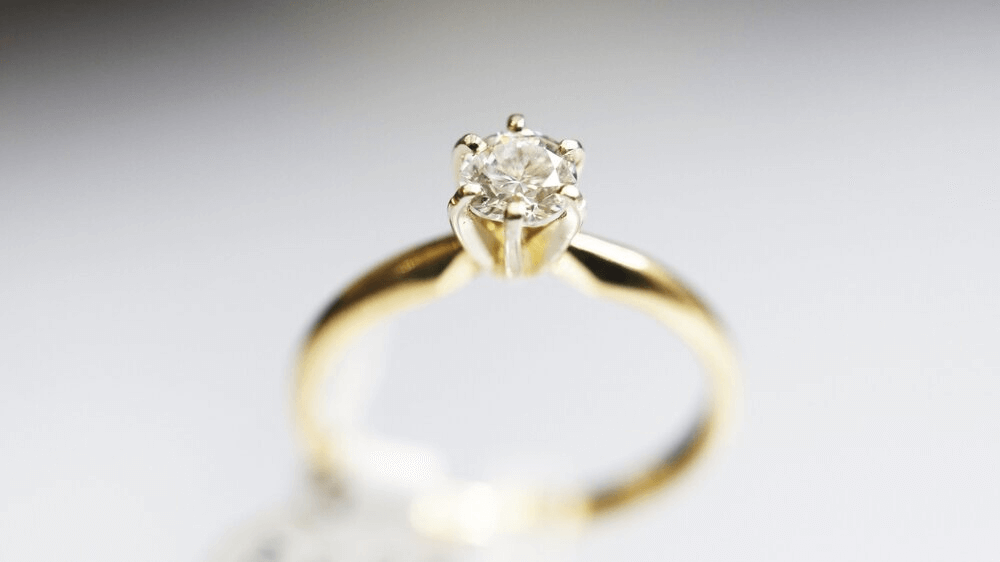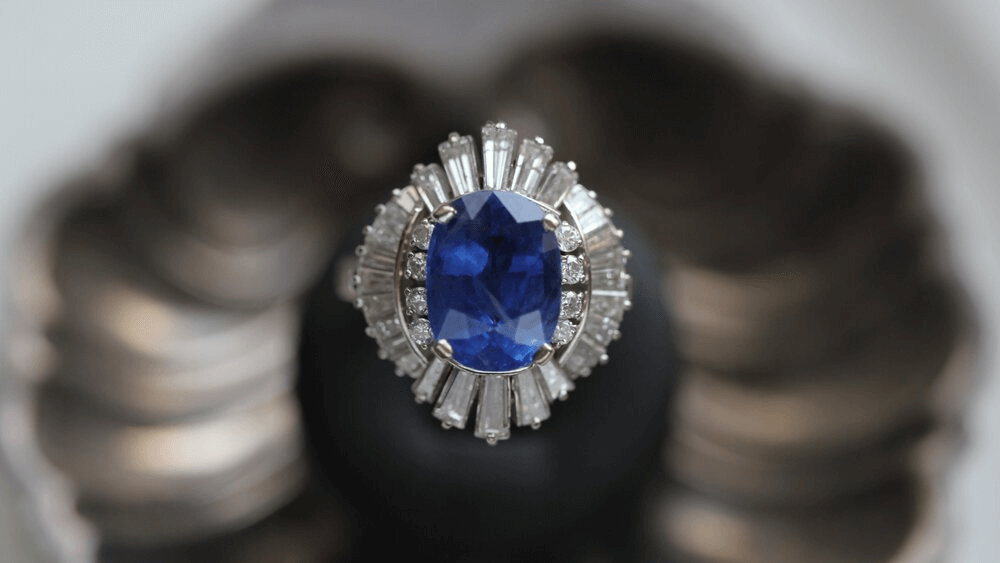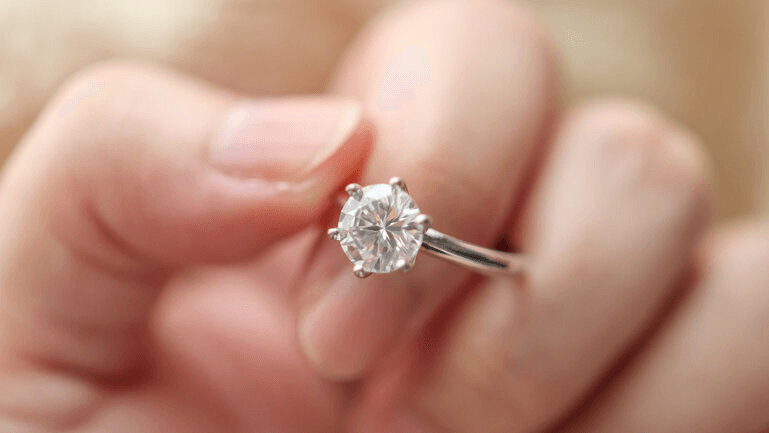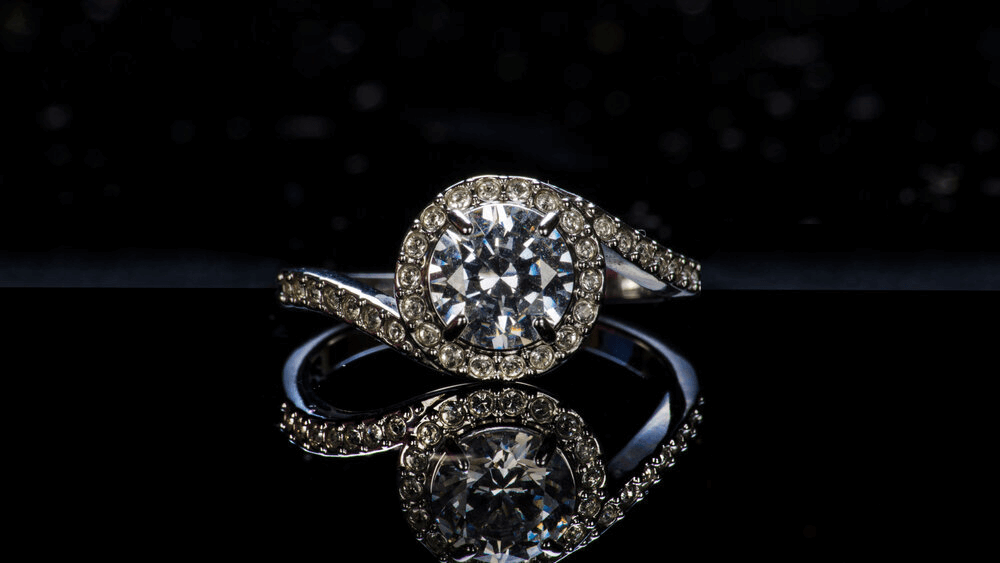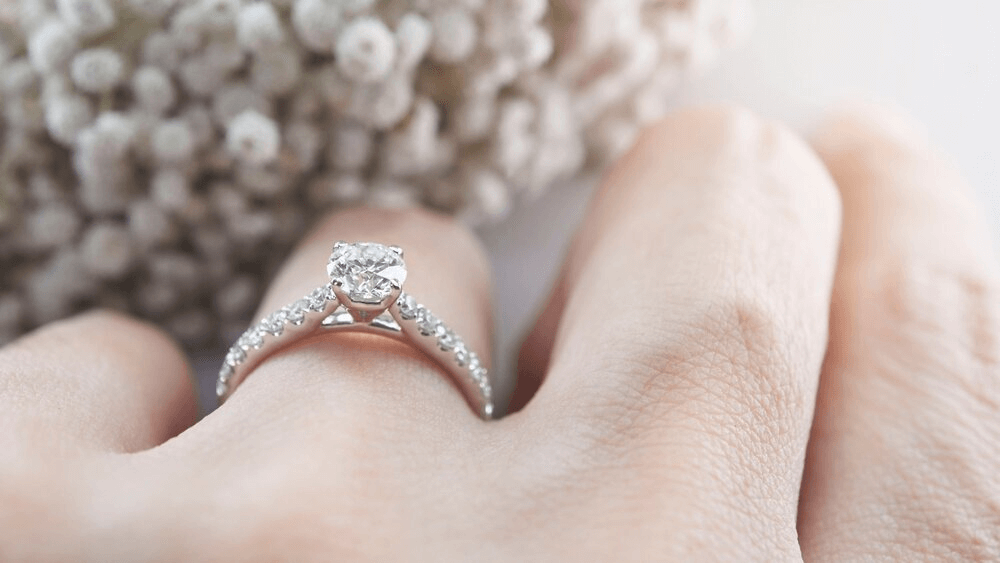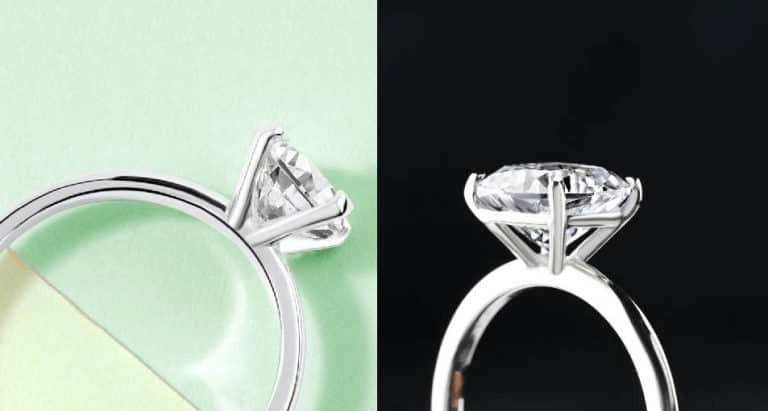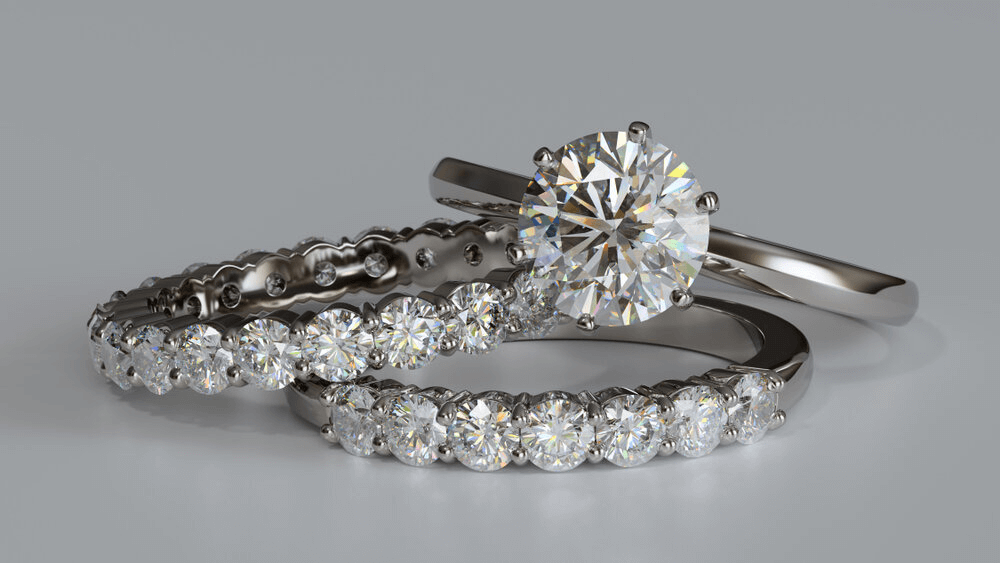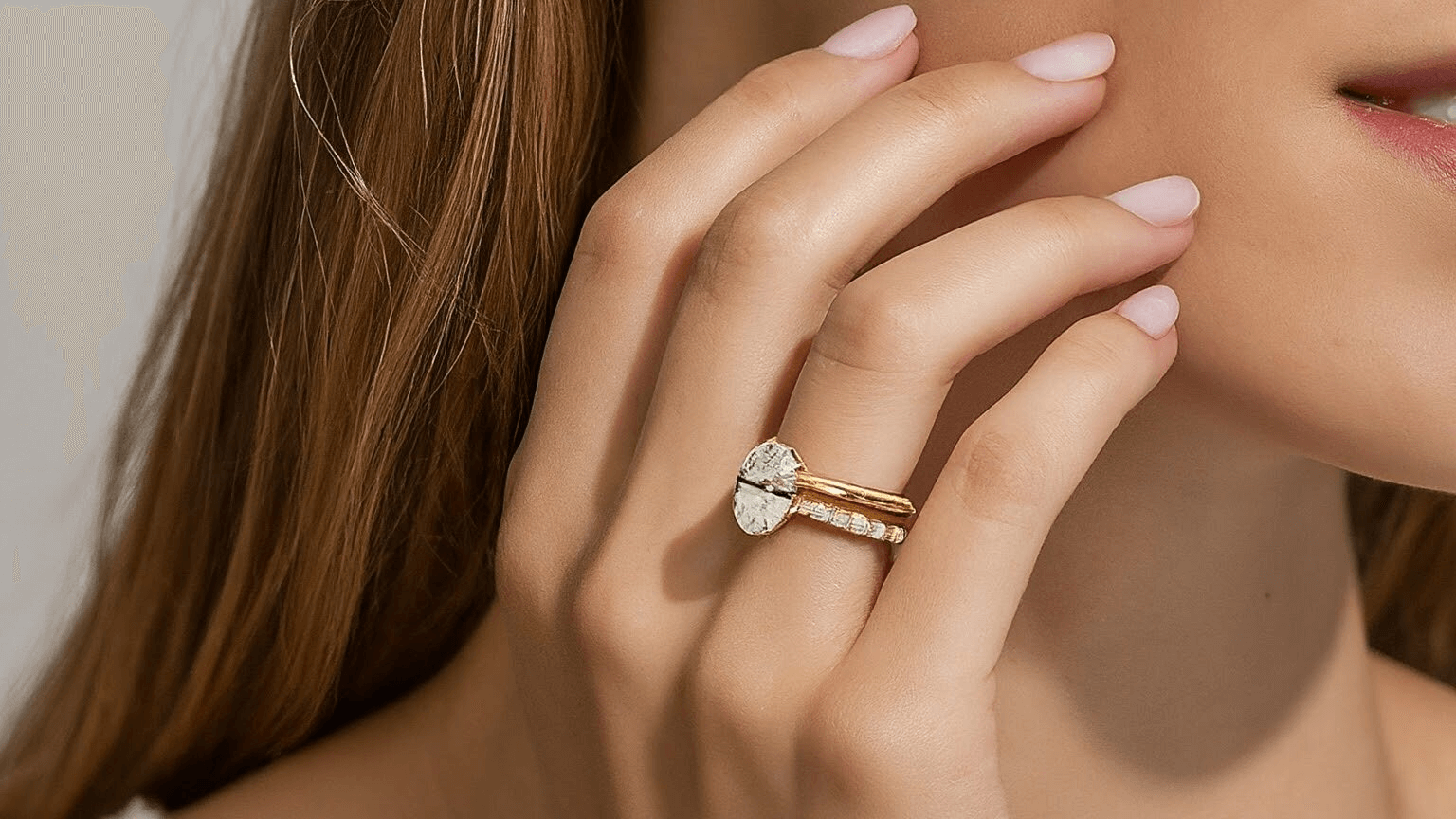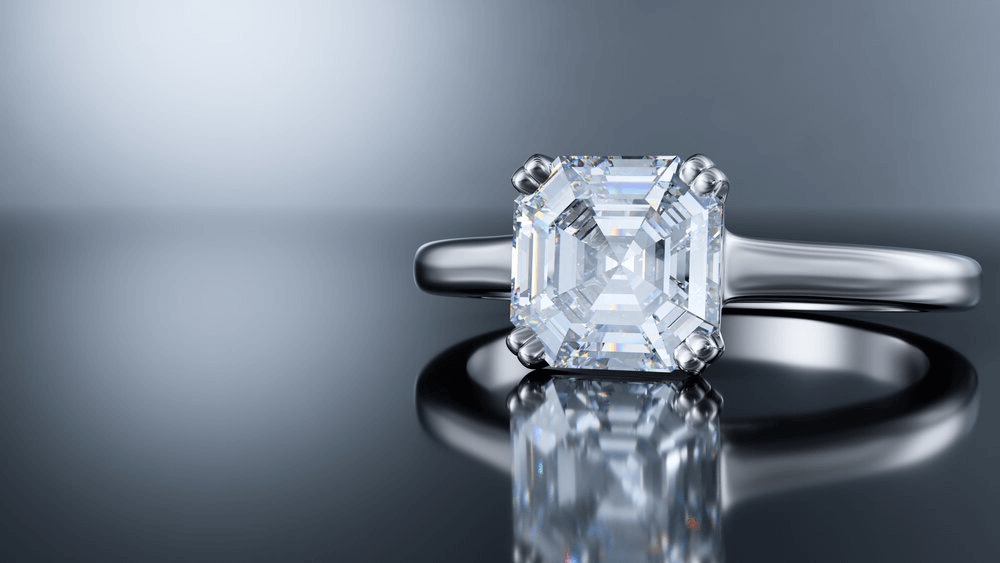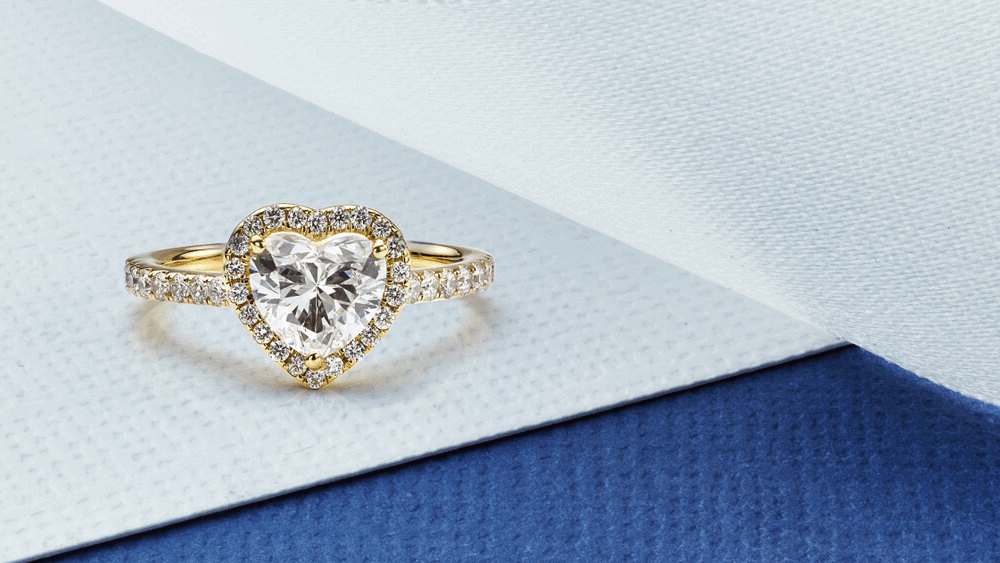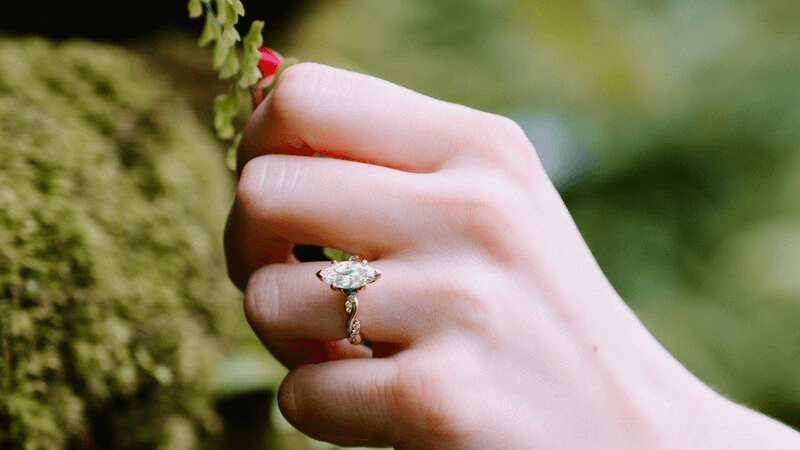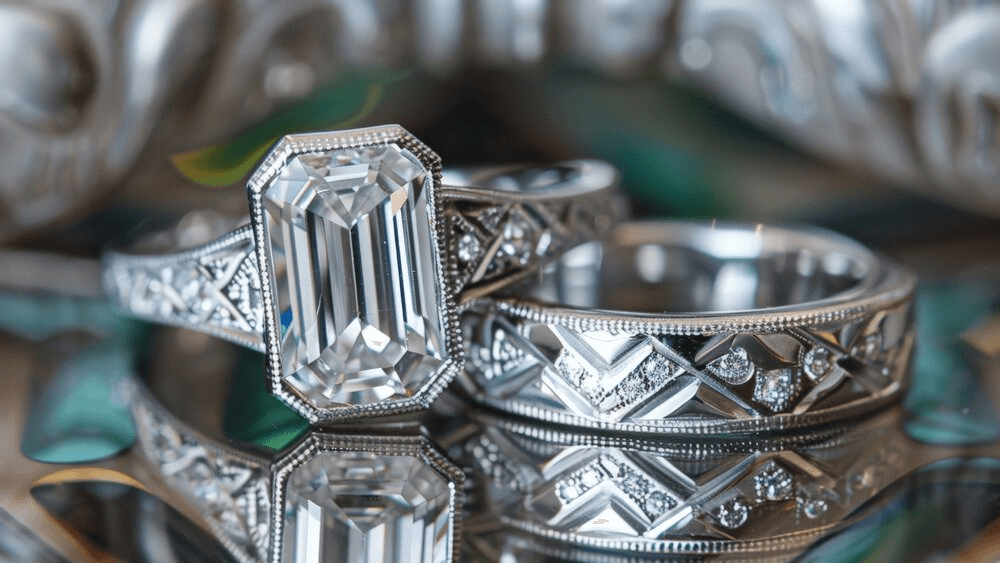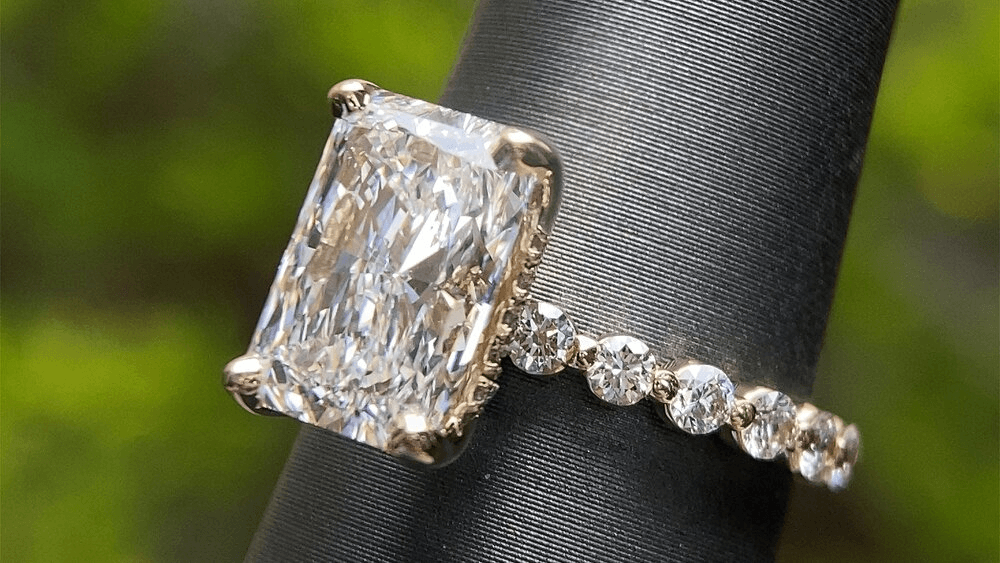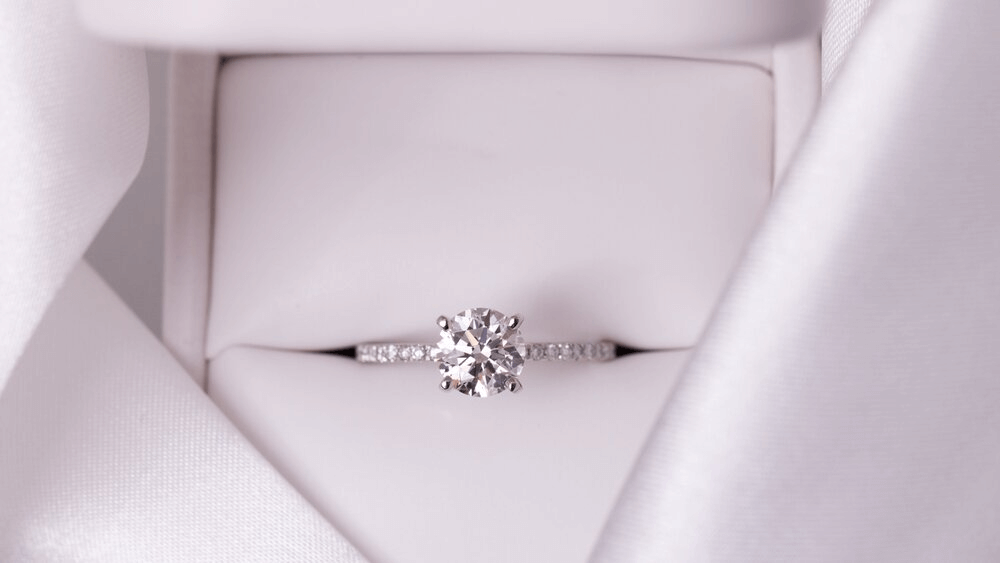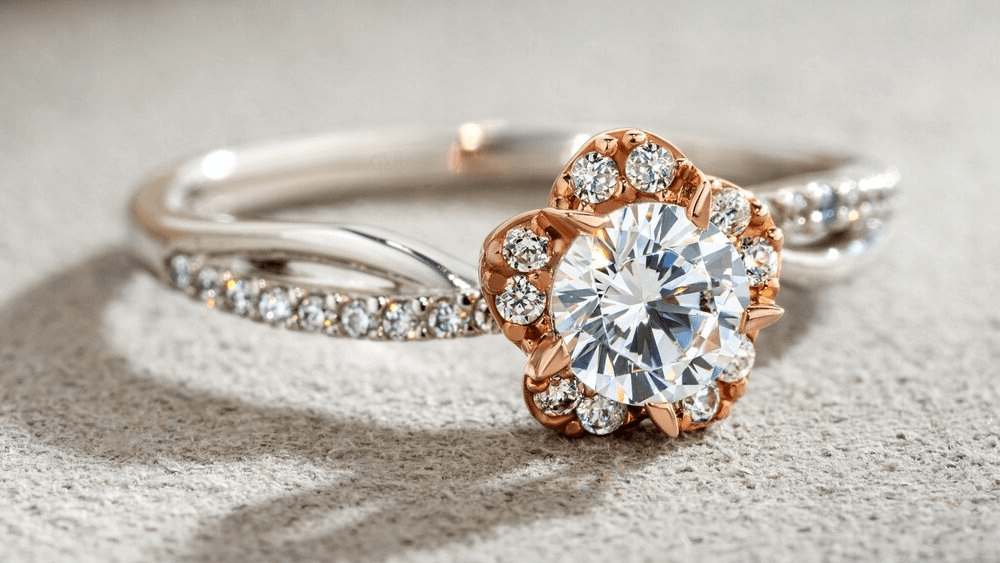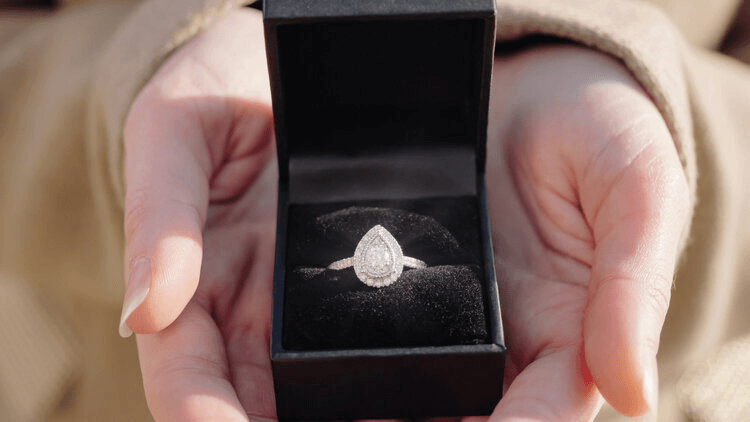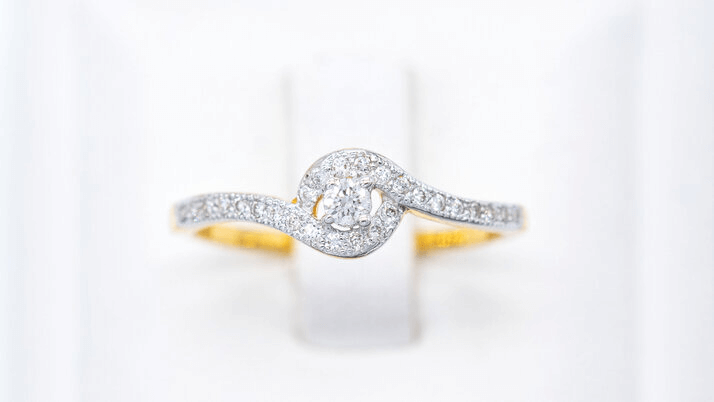Unlock the Magic of Tiffany Diamond Ring Settings

By Gary A.

Edited by Olivia H.
Published Aug 8, 2024
Edited on Mar 31, 2025
The Tiffany Setting is the epitome of timeless elegance, offering a classic design that elevates the diamond to take center stage, capturing the essence of sophistication and enduring beauty.

Navigate This Guide:
- 6 Quick Tips for Buying a Tiffany Setting Engagement Ring
- Introduction to Tiffany Setting Diamond Engagement Ring
- The Six Prongs of Perfection
- The Anatomy of a Tiffany Setting Engagement Ring
- A Glimpse into History
- Tiffany vs. Tiffany-Style: Navigating Your Choices
- Our Expert Take
- 8 Frequently Asked Questions About Tiffany Setting Engagement Rings
Before we dive deeper into the specifics, here are some practical tips to help guide your decision-making process:
6 Quick Tips for Buying a Tiffany Setting Engagement Ring
When purchasing a Tiffany setting engagement ring, it’s crucial to pay attention to several key aspects to ensure you’re getting a quality piece that meets your expectations and needs. Here are some practical tips to guide you through the process:
- Tip 1: Understand the Importance of the Cut
- The cut of a diamond in a Tiffany setting is paramount, as it directly influences the ring’s overall brilliance and sparkle. Look for a cut that reflects light well, typically a round brilliant or a modified brilliant cut, to enhance the setting’s design.
- Tip 2: Assess the Prong Quality
- Examine the prongs carefully since they play a critical role in securing the diamond. Ensure they are well-crafted, evenly spaced, and sturdy enough to hold the diamond in place without overshadowing its beauty.
- Tip 3: Prioritize Diamond Clarity and Color
- In a Tiffany setting, the diamond is the centerpiece. Opt for a diamond with high clarity and a color grade as close to colorless as possible. This setting exposes the diamond from various angles, making these aspects more noticeable.
- Tip 4: Consider the Metal Type
- The choice of metal can significantly affect the ring’s appearance and durability. Platinum is a popular choice for its strength and minimal maintenance, but white, yellow, or rose gold can also complement the Tiffany setting beautifully, depending on personal preference.
- Tip 5: Balance Carat Weight with Overall Quality
- While the carat weight contributes to the diamond’s size, it’s essential to balance it with the other Cs to ensure the ring’s beauty and value. A smaller, higher-quality diamond can be more appealing than a larger one with noticeable imperfections.
- Tip 6: Inspect the Ring’s Profile
- The Tiffany setting is known for elevating the diamond, but the height can vary. Consider the wearer’s lifestyle and choose a setting height that minimizes the risk of snagging while still allowing ample light to enhance the diamond’s brilliance.
Now that you’ve got these practical tips, use Jeweler AI below to find the perfect engagement ring that suits your style and budget:
Introduction to Tiffany Setting Diamond Engagement Ring
Every once in a while, a jeweler or brand will produce a design that becomes so instantly iconic – so distinctive, and yet versatile enough to withstand our fickle trend cycles – that it never dips in popularity, no matter how many years pass. The Tiffany Setting is arguably one of the best examples we have of this phenomenon. Like De Beers’ famous line, ‘A diamond is forever’, the Tiffany Setting represents one of the most time-honoured parts of the engagement ring world.
Beautiful yet simple, practical yet chic, this is a great setting to consider if a diamond solitaire is on your radar…
The Six Prongs of Perfection
We’ll look in more detail at the specifics of the Tiffany Setting below but, for now, the most important features to be aware of are those six perfectly spaced prongs. Whereas your average solitaire round brilliant features four prongs with a view to minimising the metalwork’s impact on light performance, the Tiffany setting is a subtle departure from the norm.
The Anatomy of a Tiffany Setting Engagement Ring
At the heart of the Tiffany setting is a sleek and minimalistic six-prong design that elevates and showcases the diamond’s brilliance. The prongs are strategically placed to maximize light refraction and create a mesmerizing sparkle. This setting also features a slender metal band, often crafted from platinum or white gold, allowing the diamond to take center stage.
One of the most significant advantages of the Tiffany setting is its ability to make the diamond appear larger than its actual carat weight. The elevated design and lack of additional embellishments create an illusion of grandeur, making it a popular choice for those seeking a timeless and elegant look without compromising on the diamond’s size.
The Cut: Maximizing Brilliance
Tiffany settings allow plenty of light to reach the diamond – and a lot more than what would have reached the stone before prong settings were introduced. That said, six prongs block more light than the usual four, so ensuring the highest possible quality for your cut grade is imperative.
Read all about cut quality here.
Color and Clarity: The Unsung Heroes
A strong color is so important if you’re sticking with the traditional Tiffany’s vibe and opting for a platinum band and setting. Colorless metals like platinum can really highlight any slight trace of color in a diamond, so do yourself a favor and invest a little more into a stone from the higher end of the Near Colorless range – ideally, a G or H.
Clarity is also very important, although not as important as color. As always, you’ll want to prioritise eye cleanliness at one of the lower grades. Read all about it here.
Carat Weight: Balancing Size and Quality
There’s no prerequisite for a certain carat weight if you’re opting for a Tiffany style setting. Traditionally, the rings you’ve seen on TV and social media probably fall between the 1.5-5 carat range, but that’s not to say you can’t go under, for a dainty engagement ring, or over, for something really spectacular.
Read all about carat weight here.
A Glimpse into History
A big part of the Tiffany setting’s appeal lies in its unique backstory…
Charles Lewis Tiffany’s Visionary Design
Sure, I’d be happy to share a bit about the fascinating history of the Tiffany setting!
This iconic design can be traced back to the late 19th century when Charles Lewis Tiffany, the founder of the renowned Tiffany & Co. jewelry empire, introduced a revolutionary ring setting that allowed the diamond to be truly admired in all its glory. Prior to this, diamonds were often set in intricate, heavy metalwork that overshadowed the gemstone itself.
The Evolution of an Icon
The Tiffany setting quickly gained popularity among the elite, with its minimalistic yet elegant style becoming a symbol of sophistication and taste. Over time, it evolved into a timeless classic, gracing the fingers of countless brides-to-be across generations. Even today, over a century later, the Tiffany setting remains one of the most sought-after and recognizable designs in the world of engagement rings.
Its enduring appeal lies not only in its beauty but also in its ability to seamlessly blend tradition and modernity
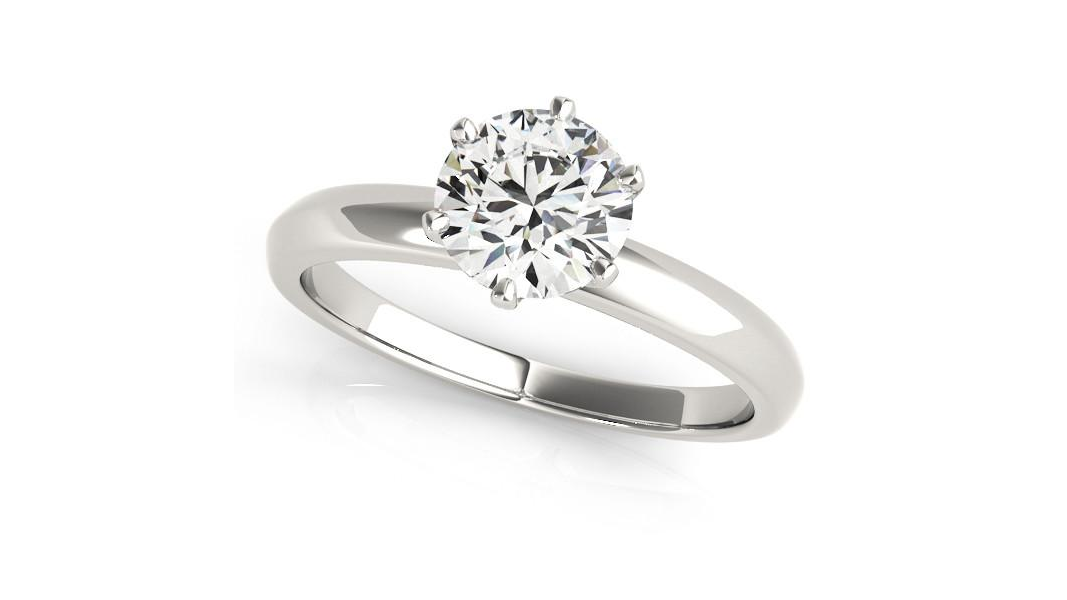
Tiffany vs. Tiffany-Style: Navigating Your Choices
Put simply, a Tiffany Setting is one that was created by Tiffany & Co themselves. Again, it will feature that same 6 prong style, but the only way to get a ring that is certifiably a Tiffany Setting is to invest in one from the luxury brand.
By contrast, a Tiffany-style setting is one that draws upon those same features but doesn’t have the Tiffany’s label attached to it. As you’ve probably guessed by now comma you don’t need that 1837 blue box in order for your ring’s design to reach its full potential. While a lot of us love the idea of a designer ring, it’s just not practical for most shoppers; the surcharge incurred by shopping from a luxury brand just doesn’t fit with most budgets.
The good thing about the Tiffany setting is it is simple and very versatile. Many jewelers have mastered the technique, whether they’ve worked at one of Tiffany & Co.’s benches or not.
Authenticity vs. Affordability
We’re never going to deny the allure of a Tiffany & Co. ring – not just because of their history and status in the world of luxury brands, or even their popularity among celebrity clients, but also because of their commitment to ethical sourcing practices and transparency for shoppers.
There’s plenty to love about Tiffany’s – and not just the breakfast!
But remember that buying an engagement ring means being very careful with your budget, even if you feel like you’ve got plenty to spend. Tiffany & Co., like any designer label, comes at a higher price – but, when you’re buying a diamond, you really want the high price to be on that.
Design Variations and Personalization
You don’t need to go with the OG to get something incredible, conversation-worthy, and show-stopping. The simplicity of the Tiffany-style setting design is that it can be reinvented depending on your preferences, your partner’s style, and the type of ring design you’re opting for.
While the obvious pairing for the Tiffany setting is a round brilliant diamond, which enables those six prongs to sit very regularly around the edge of the stone, other, more unusual shapes can produce just as captivating results. The pear and marquise diamond shapes, for instance, require slightly more unusual prong placement – particularly when you’re opting for six, instead of four – but the results can be very pleasing.
And, of course, you still have the option of accents, pavé, additional sidetones, metalwork, and personal features. The Tiffany Setting leaves plenty of room for personality, and it’s not all about bright platinum, round brilliant solitaires.
Our Expert Take
We love a Tiffany-style setting. We love its history, its elegance, its simplicity and its celebration of metalwork without intruding on the diamond itself. It’s definitely worth knowing about if a solitaire is what you’re after since it adds a little extra detail to an otherwise simple (though very beautiful) design.
But that’s not to say you should write it off if you’re going for something more than a solitaire. Virtually any ring design, provided it doesn’t rely on a bezel or halo, can benefit from an additional two prongs – not just for diamond security, but for visual appeal, too.
8 Frequently Asked Questions About Tiffany Setting Engagement Rings
- Q: What is a Tiffany setting engagement ring?
- A: A Tiffany setting engagement ring features a diamond that is lifted above the band and held in place by typically six prongs, allowing maximum light exposure and enhancing the diamond’s brilliance.
- Q: Why is the Tiffany setting so popular?
- A: The Tiffany setting is celebrated for its elegant simplicity and ability to maximize the diamond’s sparkle. Its design is timeless, making it a preferred choice for those seeking a classic engagement ring.
- Q: Can I get a Tiffany setting with a different number of prongs?
- A: While the traditional Tiffany setting comes with six prongs, variations with four prongs are also available, offering a slightly different look while still maintaining the setting’s iconic style.
- Q: What types of metals are used in Tiffany setting rings?
- A: Tiffany setting rings are commonly crafted in platinum due to its durability and color, which complements the diamond’s brilliance. However, they can also be found in yellow gold, white gold, and rose gold.
- Q: How do I choose the right diamond for a Tiffany setting?
- A: Focus on the diamond’s cut, clarity, and color. A well-cut diamond with high clarity and a color grade close to colorless will look stunning in a Tiffany setting. Carat weight is also a consideration, but it should be balanced with the other factors.
- Q: Is the Tiffany setting suitable for an active lifestyle?
- A: The Tiffany setting’s elevated design can be prone to snagging. If the wearer is very active or uses their hands a lot, consider a Tiffany setting with a lower profile or ensure the prongs are secure and well-crafted.
- Q: How should I care for my Tiffany setting engagement ring?
- A: Regular cleaning with mild soap and water and a soft brush can keep your ring sparkling. It’s also recommended to have the ring checked by a professional jeweler periodically to ensure the prongs remain secure.
Discover your perfect Tiffany setting engagement ring with Jeweler AI – where elegance meets precision.
FOLLOW-UP GUIDE SERIES





